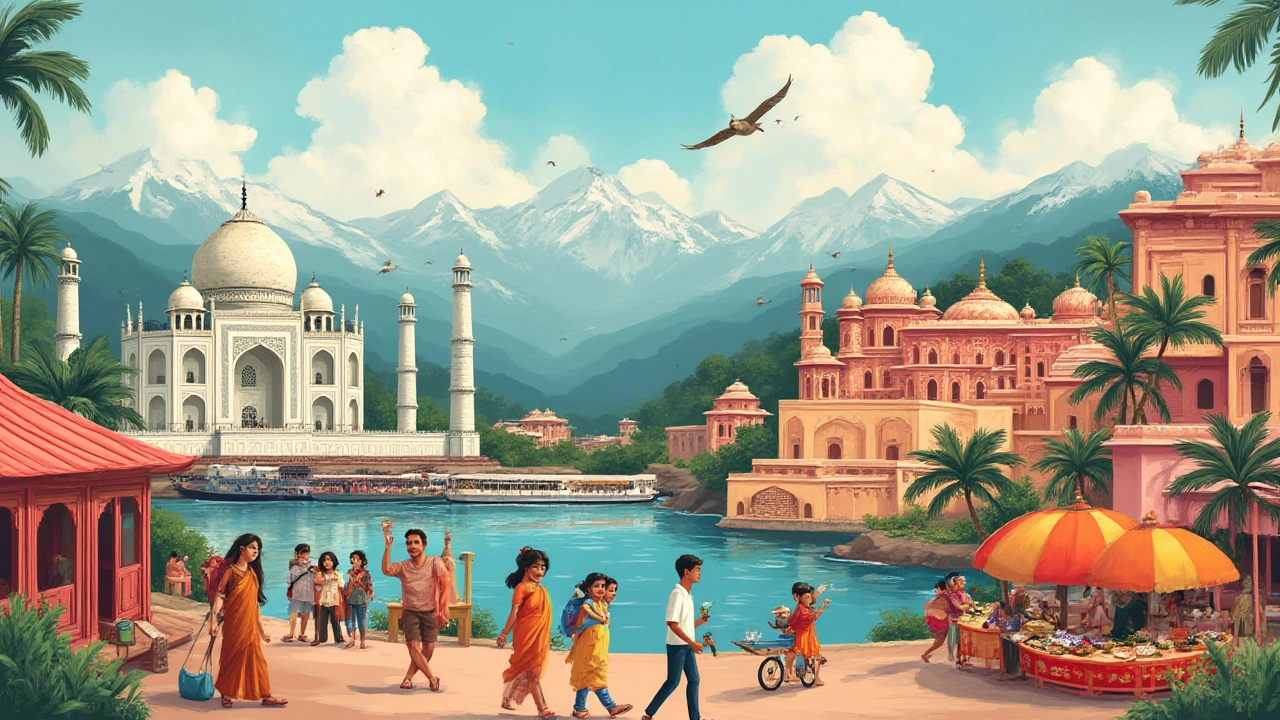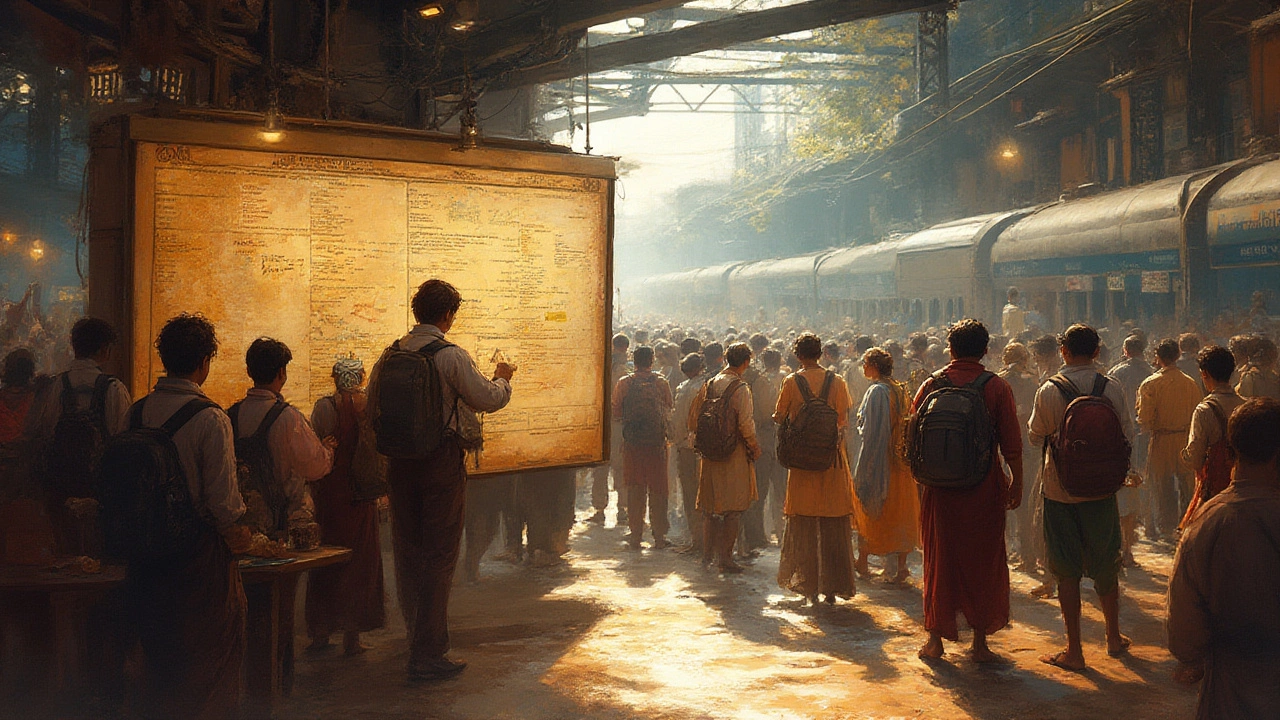Ever heard of someone saying a trip to India will change your life? Spoiler: it’s mostly true, but only if you nail your planning. India isn’t a single flavor—imagine a buffet with every dish you’ve ever wanted to try, and every spice sprinkled with a sense of organized chaos. One day, you’re shivering under a Himalayan sunrise, the next, you’re sweating through spice markets in Chennai. That mashup is what makes India irresistible, but it’s also why many trips go sideways for travelers who just wing it. Cross-country train rides, local food that can change your definition of spicy, a thousand languages and landscapes… If you thought you could see it all in a week, I’m here with some reality: you’ll fall in love, but you’ll also want a plan.
Figuring Out When to Go and Where to Start
India overflows with experiences year-round, but timing can make or break your adventure. Here’s the scoop: the best months for most regions stretch from October to March. This avoids the suffocating summer heat, endless monsoon downpours, and gives you clear skies for hill stations and ancient sites alike. Of course, South India’s beaches sparkle in December, while Ladakh and Himachal are snowed in. The weeks around Diwali (usually in October or November) light up the north with color and celebration, but flights and hotels skyrocket in price.
Start with a map. Delhi, Mumbai, and Bangalore are the main international entry points. Delhi is good if North India is your priority—think Rajasthan, Varanasi, or the Himalayas. Mumbai is best for the west coast and Goa. If you’re after palm trees and temples, fly into Chennai or Kochi to kick off your South India journey. Stick to fewer regions if you have under three weeks. The subcontinent is serious about distance: a train ride between Delhi and Kochi will take over 40 hours, and even domestic flights can get delayed.
Now, about visas. Most travelers use the e-visa system—super handy if you apply early. The rules changed a bit since 2024, so double-check on the government e-visa portal and don’t trust third-party sites blindly. Borders aren’t open for quick hops to Nepal or Sri Lanka unless you have separate visas, so plan accordingly.
What about weather quirks? Mountain lovers should know that the Himalayas are accessible only in summer (May–September) due to snow blockades. The monsoon hits Kerala and Goa by June, but Rajasthan is stunning and dry that time of year. There isn’t a perfect month for all of India, but October wins the popularity contest with cooler air, festivals, and many sites reopening after the rains.
Budget travelers, you’ll love this: off-season deals slash hotel prices nearly in half, and sleeper class on trains keeps costs laughably low (think $4–$10 for a long ride). But if you’re chasing luxury, book early—five-stars fill fast during New Year, especially in Jaipur, Udaipur, and Goa.
Designing Your Big Fat India Itinerary
Let’s get one thing clear: you can’t ‘do’ all of India in a month (unless you’re Superman). Instead, pick themes—palaces, yoga, street food, wildlife, or even Bollywood—and let those passions steer your route. The ‘Golden Triangle’ (Delhi, Agra, Jaipur) is a solid starter for history buffs, packing in the Taj Mahal, forts, and markets. If you want to add a fourth spot, Varanasi, with its sunrise Ganga rituals, is unforgettable and surreal. Now, Rajasthan isn’t just Jaipur—Jodhpur’s blue maze, Udaipur’s lakes, and Jaisalmer’s desert campfires all turn your photo album into a splash of color.
If mountains call you, the Himalayan loop should include Rishikesh (yoga capital), Manali (snow, adventure), and Leh (moonlike landscapes)—but watch out for altitude sickness, especially in Ladakh. Kashmir opened up further for tourists after 2024, so Srinagar’s houseboats and tulip gardens are back in style. On the southern side, Kerala’s backwaters, Kochi’s colonial lanes, and Hampi’s dramatic ruins steal the show for culture and calm. Don’t even get me started on Goa: there’s a party for every taste, mellow beaches in the south, and markets for every shopaholic impulse.
Pack your route smart. Here’s a sample table for 2-4 week trips, best by train or internal flights:
| Route | Main Stops | Recommended Time |
|---|---|---|
| Golden Triangle | Delhi, Agra, Jaipur | 7-10 days |
| Classic North | Delhi, Varanasi, Rajasthan, Amritsar | 14-18 days |
| Himalayan Adventure | Rishikesh, Manali, Leh, Srinagar | 14 days |
| South India | Chennai, Mahabalipuram, Kerala, Bangalore | 10-16 days |
| West Coast Circuit | Mumbai, Goa, Gokarna, Hampi | 10-14 days |
Use these as a base, then add side trips—like Ranthambhore for tigers or Mysore for palaces—depending on your interests. Read up on local festival calendars too. You might score a spot at Pushkar Camel Fair, Holi in Mathura, or Onam in Kerala.

Moving Around: Trains, Planes, and Auto-Rickshaws
Ready for a hot tip? India’s train network is an adventure in itself—it’s the largest in the world, spanning about 68,000 kilometers. Grab an IRCTC account (India’s train booking website), and get comfy because you’ll need patience. Trains, especially sleeper class, are dirt cheap and brimming with lively scenes: chai sellers, curious fellow passengers, maybe even a goat tucked under a seat. Book tickets early, at least three weeks in advance if you’re aiming for high season, or choose foreign tourist quotas for last-minute options. The speedy Shatabdi and Rajdhani trains are your friends for premium routes (bonus: decent food included).
Flying saves time for big jumps. Domestic airlines—IndiGo, Vistara, SpiceJet—often have flash sales. Book during Indian festival sales (like late October) to snag lower fares. Last year, the average fare for Delhi-Kochi was around ₹4,000 ($48), and sometimes less. Watch baggage limits—the budget airlines are strict, and fees add up if you’re not careful.
Buses fill the train gaps, especially in the hills or for overnight journeys. Try redVolvo for comfort on longer hauls. For city exploring, nothing beats the humble auto-rickshaw. They’re cheap, exciting, and their meters might as well be set to ‘adventure mode.’ Always agree on a fare first in big cities unless you spot a meter (Delhi and Bangalore have the most reliable meters). In small towns, renting a scooter is a fun way to poke around, but always wear a helmet and watch for cows—literally everywhere.
Here’s a cheat sheet for getting around:
- Trains: Book on IRCTC, download the RailYatri or ConfirmTkt app for seat alerts.
- Internal Flights: Use Skyscanner or MakeMyTrip for deals.
- Buses: RedBus app is the go-to for schedules and online booking.
- Rickshaws: Pay with digital wallets like Paytm, especially in metro cities.
- Metro/Local Trains: Delhi, Mumbai, Bangalore, Kolkata all have modern metro systems—cheap, safe, and avoid road traffic.
If you love a challenge, try the Indian road trip—the highways are a blend of holy cows, herds of sheep, festival parades, and the occasional wedding procession in the middle of nowhere. Best hire a local driver if you’re not used to this beautiful chaos.
Staying, Eating, and Staying Healthy
India’s hotel game is wild—everything from $5 backpacker hostels to literal palaces with gold-plated baths (hello, Udaipur’s Taj Lake Palace). The cool part? Even the mid-range places feel special, often family-run, with spicy home cooking and rooftop chai. Booking.com works for most cities, but some small towns still prefer direct calls or WhatsApp reserves. Airbnb has really taken off since 2022, so splurge on a heritage haveli or cozy beach hut and live like a local for a few nights.
If you want something different, try a homestay. You’ll pick up insider stories, cook with your hosts, and probably get force-fed four extra chapatis when you insist you’re full. Religious guesthouses (dharmashalas in Varanasi, gurudwaras in Amritsar) offer basic stays, often for a donation, if you want the truly local experience.
Food can be heaven or hazard, depending on your gut. Street food is unbeatable—think buttery parathas in Delhi, vada pav in Mumbai, or biryani that’ll have you weeping with joy in Hyderabad. But here’s the rule: always eat where it’s busy and freshly cooked in front of you. Have a bottle of hand sanitizer at the ready, stick to bottled or filtered water, and go easy on raw veggies. If you’ve got a sensitive stomach, probiotics and rehydration salts are your best travel companion.
Staying healthy? Most problems come from the water, so treat your bottle like your phone—never leave it behind. Pack a small first-aid kit: painkillers, band-aids, antihistamines, and a thermometer. Mosquitoes are fierce in the tropics and lowlands, so use spray, wear long sleeves at dusk, and consider anti-malarials in high-risk places.
Health stats: According to the World Tourism Organization’s 2024 update, 80% of foreign travelers to India experience mild stomach trouble, but only 2% need to visit a doctor. Pharmacies are widespread, and most basic medications are available without a prescription—just remember generic names. Lastly, travel insurance isn’t optional. Find one that covers theft, delays, and medical evacuation, even if you’re skipping the camel rides in Rajasthan.

Smart Budgeting, Scams, and Your Safety Net
Let’s talk money—the rupee is king. ATMs are everywhere, but carry some cash for hills or rural spots. Foreign cards sometimes trip out, especially on Sundays (bank maintenance time), so have a back-up. Digital wallets like Paytm, Google Pay, and PhonePe work great in cities—India jumped ahead in cashless tech after 2021’s demonetization push. Exchange rates are best at reputable banks, and if someone in the market offers a too-good-to-be-true deal, trust your gut and skip it.
Here’s a quick breakdown of what your daily spend might look like in 2025, based on travel style:
| Style | Daily Budget (USD) | Where You’ll Splurge |
|---|---|---|
| Backpacker | 20–35 | Hostels, local trains, street food |
| Mid-range | 45–90 | Charming hotels, 2nd class AC trains, guided tours |
| Luxury | 180+ | 5-star hotels, private car, gourmet dining |
Want to save? Eat local, take overnight trains, and haggle at markets. Want to splurge? Private driver, heritage hotels, curated food walks, or even a luxury tiger safari. Both ways, value is everywhere—India often gives more than you pay for.
But scams do exist. Ignore random “official guides” at tourist sites, say “no thanks” to overly helpful strangers who appear at ATMs, and never hand your phone to anyone offering to help with maps. Prepaid official taxi stands at airports and train stations are the real deal. And get a local SIM card on arrival (Airtel and Jio have the fastest 5G) for cheap data and safety calls.
Women travelers are always asking: is it safe? Odds are in your favor with some common sense. Dress modestly, avoid empty streets after dark, download a taxi aggregator app (Uber and Ola are cities’ favorites), and trust your instincts. Most locals go out of their way to help, and solo female travel is at an all-time high in India since the tourism push in 2023—groups like ‘Girls Who Trek’ or ‘Solo Female Travelers India’ on Facebook are full of support and meetups.
The best way to keep your trip stress-free? Mix confidence with curiosity. And always, always leave room in your schedule for India’s best moments—the ones you never see coming.
